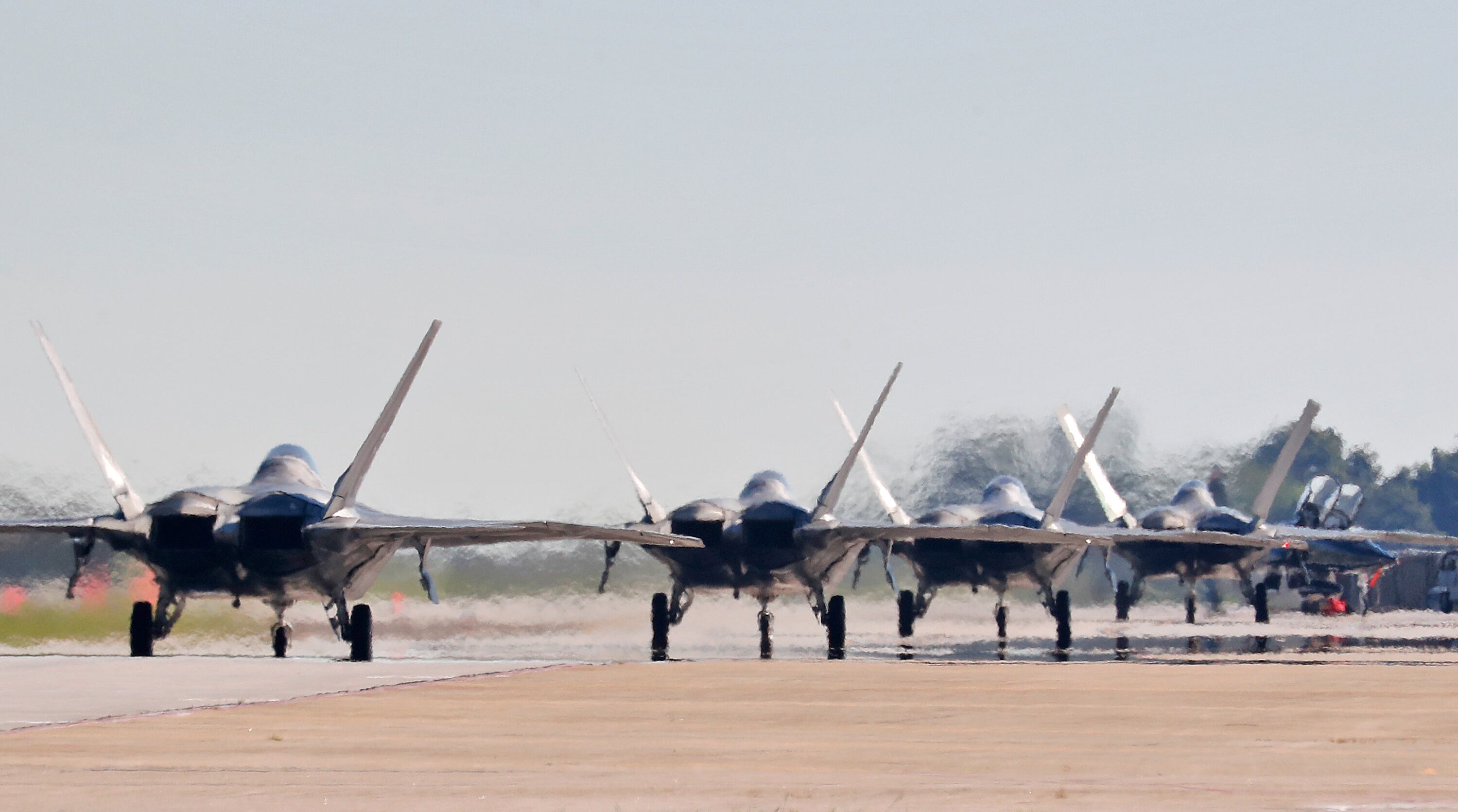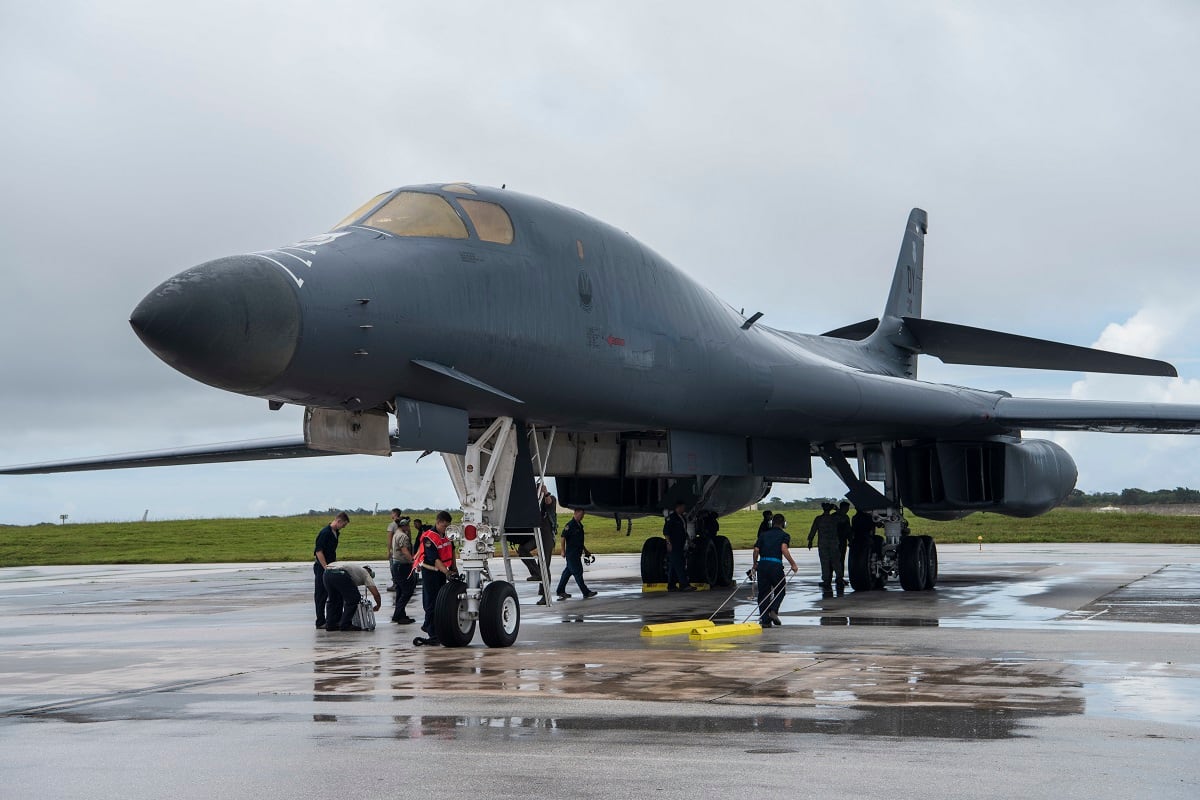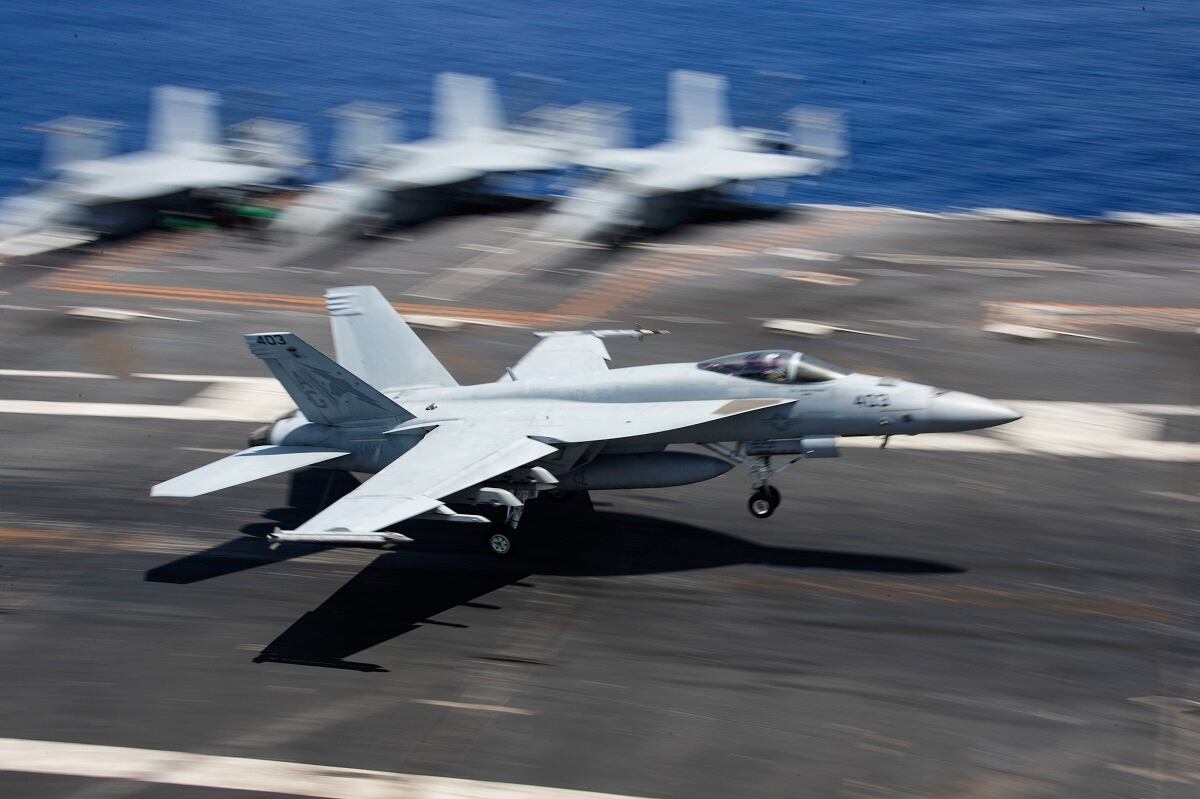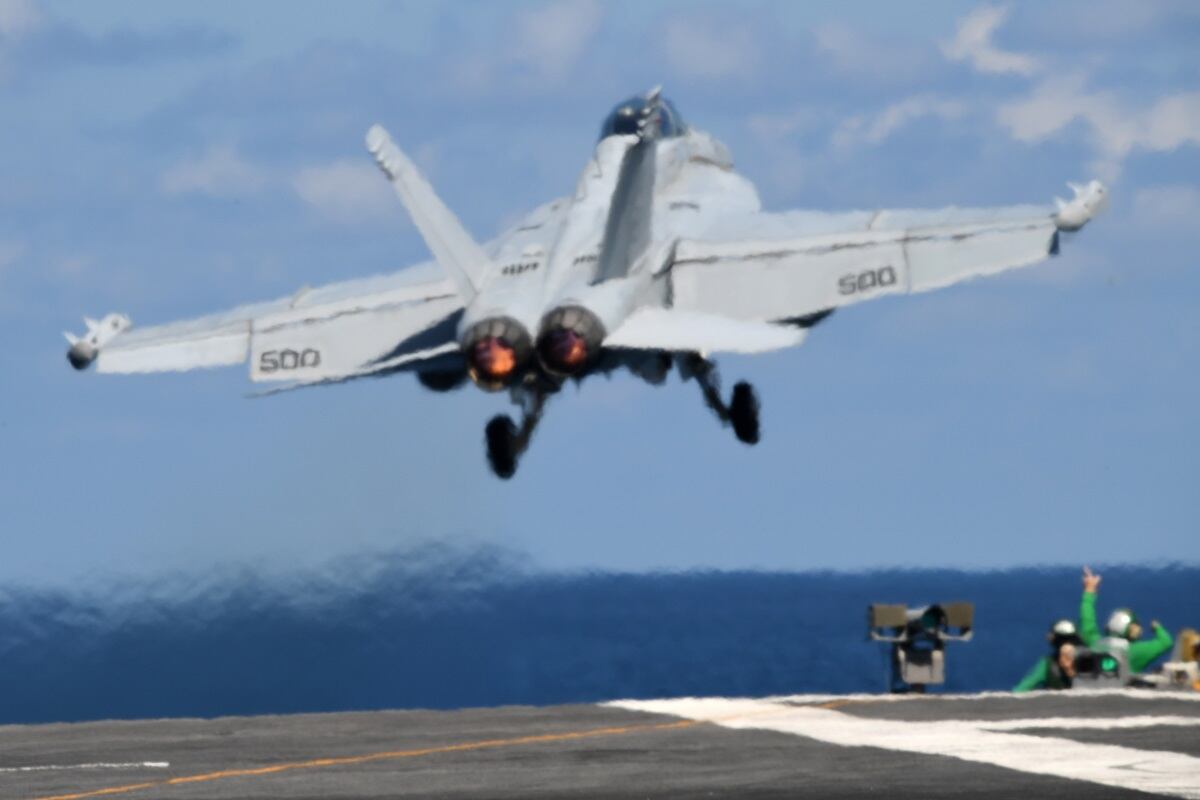WASHINGTON — Last month, Defense Secretary Jim Mattis issued a mandate to the U.S. military: get the mission capable rates of the F-35, F-22, F-16 and F/A-18 up to 80 percent. For the defense firms that make those planes, that could mean a chance to rake in more cash.
During interviews this month, officials from Boeing and Lockheed Martin told Defense News they were excited by Mattis’ order to improve readiness, seeing it as an opportunity for increased government buy-in for reliability improvements and investments in data analytics and spare parts.
RELATED

“I had a pretty long time supporting weapon systems from the flight line perspective before coming to Lockheed Martin,” said Bruce Litchfield, vice president of sustainment for Lockheed Martin Aeronautics and a former commander of the Air Force Sustainment Center.
“Usually in Washington the focus is on new platforms and acquisitions and things like that,” he added. “To have a focus like this coming from somebody like Secretary Mattis to help and support and sustain our war-fighting capabilities at the flight line level … that’s pretty exciting.”
Dan Gillian, Boeing’s F/A-18 program manager, said the mandate puts “a capstone” on the Navy’s existing efforts to drive up readiness.
Mattis’ Sept. 17 memo gives the Navy, Marine Corps and Air Force until the end of fiscal 2019 to hit the 80 percent target — an ambitious prospect given current mission-capable rates, which in FY17 ranged from about 70 percent for the F-16 to 49 percent for the F-22.
The Air Force is the first service to hint at how it will boost those numbers. Earlier this month, Air Force Secretary Heather Wilson laid out details of the service’s plan, which includes increases to maintenance staffing and investments to improve supply availability.
RELATED

“That will mean shifting some money around in our budget, but we’ve put a plan together to do that,” she said in an Oct. 25 interview with Defense News.
The service will also make some major changes to the way Air National Guard units approach maintenance, installing a second maintenance shift and giving young active-duty pilots flying hours on Guard jets. That would increase the amount of time those aircraft could be flown over a given period, as active-duty pilots can clock a greater number of flight hours than Guard pilots.
“It’s a way of seasoning them and getting them a lot of flying time and a lot of senior mentoring very quickly," Wilson explained.
While Wilson’s comments centered predominantly on what the Air Force can internally do to augment readiness, the aforementioned changes to the supply chains of the F-22, F-35 and F-16 will require support from industry — in this case, Lockheed Martin.
Litchfield said Lockheed is engaged in preliminary discussions with the Air Force on what’s “in the art of the possible” to improve sustainment practices.
While the F-35, F-22 and F-16 are very different aircraft with different maintenance challenges — from the low-observable coatings of the F-22 and F-35, to the age of the F-16 airframe, to ongoing issues with the F-35 logistics system — Lockheed believes all would benefit from moving to a conditions-based maintenance model that uses algorithms to analyze data and predict when parts are likely to break.
“We can start looking at data feeds from the jet,” he said. “We can start looking at probabilistic modeling of when things fail and inspections that are due and when preventative maintenance happens, and then bundle those so they have the least amount of downtime on the aircraft.”
The Air Force is exploring how it uses data analytics for maintenance, having recently moved the C-5 and B-1 to a conditions-based maintenance approach, with plans for the C-130 and KC-135 to follow.
RELATED

But for Lockheed, that data can also help it more proactively evaluate what and where spare parts might be needed.
“You’re really trading volume in the supply chain for velocity in the system,” Litchfield said. “So knowing when something is going to break, or knowing when an inspection is due, or knowing when a part replacement is, you forward-deploy the parts and have them in the right place. That is, again, where artificial intelligence and advanced analytics come into play.”
Litchfield said that approach is helping Lockheed dig out from supply issues that have hounded the F-35 program, the services’ newest fighter jet.
As Defense News has reported, F-35 maintainers in the field have complained about long wait times for spare parts that can amount to years. Lockheed officials insist the company is using maintenance data to help optimize the production of spares and, in some cases, uses its own money to pre-fund components with long lead times.
Boeing gets down to business
While the Navy and Marine Corps have not publicly discussed their plan to meet Mattis’ mandate, increasing the availability of F/A-18s has been a major priority of each service for some time.
RELATED

During the week of Oct. 15, Chief of Naval Operations Adm. John Richardson visited Boeing’s Super Hornet plant in St. Louis, Missouri, to get an update on the company’s efforts to augment readiness.
Company officials briefed Richardson on upcoming production of Block 3 Super Hornets, a service life modernization program that will upgrade and extend the life of existing Super Hornets, and new measures meant to improve F/A-18 sustainment — all of which will help the Navy increase its mission-capable rates, said Boeing’s Gillian.
Will it be enough? It’s a start, Gillian said.
“From Boeing’s perspective, these levers that we’re pulling and the way we’re doing business differently are the way to attack this problem,” he said. “It’s not yet known if they are going to get us to 80 percent or not. We know the old way of business was not [working]. … We’re moving fast. Some things will work, some things won’t work, and we’ll adjust and continue to attack.”
RELATED

Over the last six months, “most of the creative energy” has gone into figuring out how Boeing can help the Navy improve its day-to-day sustainment work.
One aspect of that effort involves an expansion of Boeing’s current role in Hornet sustainment. The company increased the number of field service representatives embedded with the Navy this summer, with plans to keep adding representatives through the end of the year.
Boeing also has added engineers who will work with the Navy to isolate components and subsystems in need of reliability improvements, but the effort is still in its “infancy stages” and will require a comprehensive look at the service’s sustainment data.
Gillian acknowledged that when the future of the Super Hornet line was in doubt, “maybe we didn’t do as good of a job on the reliability improvements as we should have done.” But, he added, there is a “renewed focus and energy there for how can we attack troubled parts, troubled systems to make them more reliable.”
“We’ve seen some quick wins, I think,” he said. For example, by having more of its own experts working alongside the Navy, Boeing has also been able to help the service speed up the timeline to get a couple F/A-18s back online, accelerating that from 2020 to the end of this year.
RELATED

Boeing is also working to create what Gillian calls an “integrated demand” for the supply chain — in essence, looking out to Boeing’s production line, life-extension lines and to the field to give its suppliers a stabilized forecast of the upcoming demand for parts.
There has already been some success on the supply chain front — in certain cases, parts that normally take maintainers a year and a half to take hold of have been expedited to a month’s wait. But with so many moving parts and so many changes to the program, it will take time to fully optimize it, he added.
“In a few cases, we’ve identified some capacity constraints. Now we know about them and can go attack,” he said. “In most cases we’re finding that there is capacity out there to be consumed.”
Valerie Insinna is Defense News' air warfare reporter. She previously worked the Navy/congressional beats for Defense Daily, which followed almost three years as a staff writer for National Defense Magazine. Prior to that, she worked as an editorial assistant for the Tokyo Shimbun’s Washington bureau.







